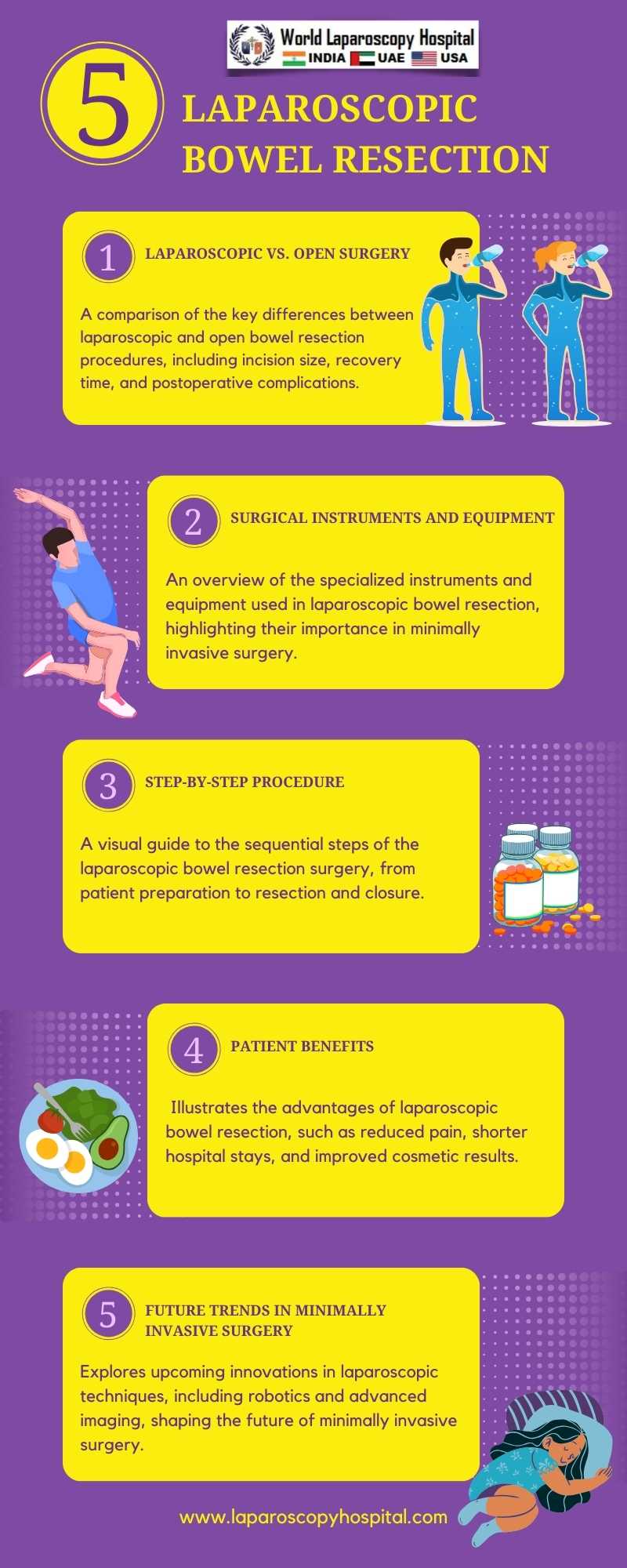Introduction:
In the world of modern medicine, surgical techniques have evolved significantly, moving towards less invasive procedures that promote quicker recovery and reduced postoperative complications. One such advancement is the technique of laparoscopic bowel resection. This article explores the concept of minimally invasive surgery and delves deep into the intricacies of laparoscopic bowel resection, highlighting its benefits, techniques, patient outcomes, and future prospects.

Section 1: The Evolution of Minimally Invasive Surgery
Minimally invasive surgery (MIS) represents a paradigm shift in the field of surgery. This section provides an overview of the historical context, beginning with the development of laparoscopy, and its progression to include various surgical procedures. It emphasizes the shift from traditional open surgeries to laparoscopic techniques.
Section 2: Understanding Laparoscopic Bowel Resection
2.1 Anatomy of the Bowel
- A brief overview of the anatomy of the gastrointestinal tract.
2.2 Indications for Bowel Resection
- Discusses the medical conditions and diseases that necessitate bowel resection.
2.3 Laparoscopic vs. Open Bowel Resection
- A comparative analysis of laparoscopic and open surgical approaches, highlighting the advantages of the former.
Section 3: The Laparoscopic Bowel Resection Procedure
3.1 Patient Preparation
- Details the preoperative steps, including patient evaluation and consent.
3.2 Surgical Instruments and Equipment
- A comprehensive list of the instruments and equipment used in laparoscopic bowel resection.
3.3 The Surgical Technique
- Step-by-step description of the laparoscopic bowel resection procedure, including port placement, insufflation, and resection.
3.4 Intraoperative Considerations
- Addressing challenges and complications that may arise during surgery.
Section 4: Benefits and Outcomes
4.1 Reduced Pain and Faster Recovery
- Discusses how laparoscopic bowel resection minimizes postoperative pain and shortens hospital stays.
4.2 Improved Cosmetic Results
- Explains how smaller incisions lead to better cosmetic outcomes.
4.3 Lower Risk of Complications
- Highlights the decreased risk of surgical site infections, hernias, and adhesions associated with laparoscopic surgery.
4.4 Enhanced Quality of Life
- Examines how patients experience improved postoperative quality of life.
Section 5: Postoperative Care and Follow-up
5.1 Postoperative Recovery
- Details the immediate postoperative period and the patient's transition back to normal life.
5.2 Long-term Follow-up
- Discusses the importance of ongoing monitoring and care.
Section 6: Case Studies and Patient Experiences
6.1 Real-life Stories
- Shares personal experiences and testimonials from patients who underwent laparoscopic bowel resection.
Section 7: Future Trends and Innovations
7.1 Robotics in Laparoscopic Bowel Resection
- Explores the potential of robotic-assisted surgery in further improving laparoscopic techniques.
7.2 Advancements in Imaging
- Discusses how advanced imaging technologies are enhancing the precision of laparoscopic procedures.
7.3 Training and Education
- Highlights the importance of training programs for surgeons to master laparoscopic techniques.
Conclusion:
Minimally invasive surgery, particularly laparoscopic bowel resection, has revolutionized the field of gastrointestinal surgery. This article has provided a comprehensive overview of this technique, from its historical development to its current applications and future prospects. Laparoscopic bowel resection offers numerous benefits, including reduced pain, faster recovery, and improved patient outcomes. As technology continues to advance, the future of minimally invasive surgery holds even more promise, ensuring that patients receive the best possible care while minimizing the invasiveness of their surgical experience.